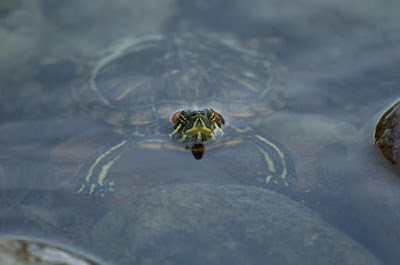Evolutionary Thinking Muddles Turtle Sex Selection Study
Reptiles generally lay their eggs in the sand, but people have been curious as to why the hatchlings are usually of the same sex. (That would make things a mite difficult when they decide to make little turtles.) They do find each other eventually. It has been determined that temperature and humidity play a big part in whether or not they get Josephs or Josephines.
Later, it was learned that the sex has something to do with temperature and humidity — the eggs actually sense conditions. Researchers conducted some mighty fine research all the way down to studying genes, but it was tainted by evolutionary thinking. Instead of using a design framework (things were created to do what they do for a reason), researches invoked evolutionary mysticism, such as non-science like "selective pressures". They have yet to determine why only some reptiles have this temperature-sensing egg thing happening. Scientific evidence shows that mechanisms are internal, as programmed by the Master Engineer, and not external, as envisioned by those who ride for the Darwin brand.
 |
| Red-eared slider turtle image credit: NASA / Johnson Space Center Public Affairs Office (Usage does not imply endorsement of site contents) |
Remarkably, when a number of reptilian mothers (including lizards, snakes, turtles, and alligators) bury eggs in warm, incubating sand, all the eggs may produce offspring of the same gender. Females develop at one temperature and humidity, males at another, and a ratio of both sexes at temperatures and humidity levels in between. Sophisticated research is finding some key molecular links between ambient temperature and reptile sex expression. However, if researchers had not initially rejected an engineering-based framework and then embraced evolutionary notions, they may have found research clues that would save years of time.To finish reading, click on "Turtle Eggs Sense Temperature Changes".